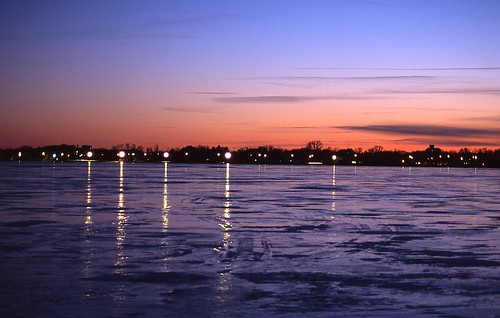 |
| Slough off North Asylum Bay |
Tunneling through the snow are a number of little mammals. Mice, voles, and shrews enjoy the relative
safety provided by their tunnels. There
they are free from the piercing eyes of hawks, but are still vulnerable to the
ears and talons of great-horned owls and pouncing foxes.
On the lake bottoms are the flying insects of summer. The billions of lake flies of spring are all
there as the larva called bloodworms.
Keeping company with sediment, decaying plants and rocks are the larva
of caddisflies, damselflies, dragon flies, and mayflies that will emerge from
the lake and take flight in spring and summer. All of these are food throughout the winter
for bluegills, perch and other fish.
Up the food chain there are reptiles we envision hibernating
in the mud. Some turtles and frogs are
indeed buried in the mud, but others are piled up sitting on the lake bottom
motionless or crawling along at a snail’s pace.
Common map turtles sit on the bottom or wedge themselves amongst rocks
and logs. When disturbed they retreat,
and may reveal a northern leopard frog underneath, which will also swim
away. Hardly asleep, these map turtles
require more oxygen than painted turtles buried in the sometimes anoxic mud. The cold and relative inactivity allows them
to take in all the oxygen they need from water.
Frogs and softshell turtles breathe through their skin, but softshells
also take in oxygen through special adaptions in their throats.
 |
| Frozen Lake Winnebago at Oshkosh |
Mammals have no options but to breathe air. The local aquatic members of the weasel family--river
otter and mink--must maintain holes in the ice with their teeth to be able to
gain access to the fish, frogs, turtles and other animals they eat. Muskrats often use the same holes, but they
try to stay concealed, and will never walk on ice and snow if they can avoid
it. Muskrats build huts, or lodges like
beavers do, but muskrat homes are made of aquatic plant leaves, stems, and
roots. Here they sleep and eat, but they
often swim far beyond the range of one breath to obtain the food they
need. For those foraging trips they
build cave-like “push ups” for breathing.
They will also build small feeding huts, which are self-explanatory. A sudden drop in water levels after the ice
forms seals off all these structures from the muskrats’ food, forcing them onto
ice and snow and into the jaws of coyotes.
Winter is a harsh time for wildlife, but it can be easier
under the ice and snow for those adapted to it.
Previously published in the Oshkosh Scene article.
Previously published in the Oshkosh Scene article.
No comments:
Post a Comment